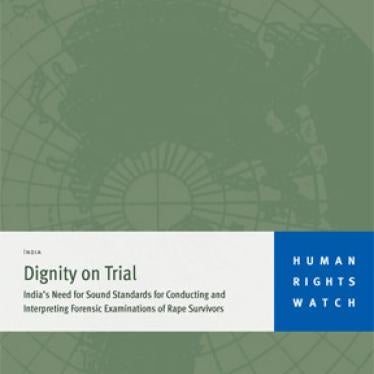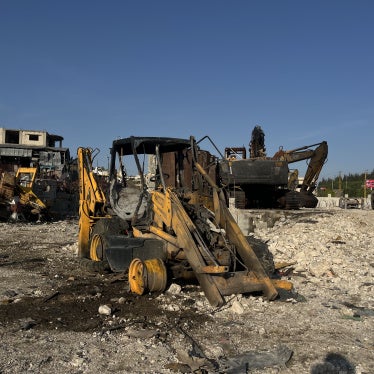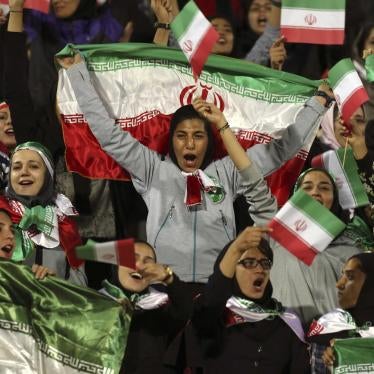MUMBAI—“You there! You are so dirty! Don’t sit on that chair!”
These were words that a woman in India—bloodied and soiled after she had been raped—heard when she sought help from a doctor. A social worker described this scene to me in 2010, recounting the kind of mistreatment she frequently witnessed when accompanying survivors of rape to hospitals.
Dr. Rajat Mitra of Swanchetan, a New Delhi–based group that supports survivors of violence, told me that when heaccompanies rape victims to police stations or hospitals, officials often say things like, “Why are you crying? You have only been raped.” Such statements, while anecdotal, capture the insensitivity many rape survivors encounter when they approach police officers and doctors in India.
The prompt response of the police following last month’s brutal gang rape and death of a 23-year-old New Delhi student—investigating the case and arresting the accused men—was a good thing, but unfortunately it may have given the world the wrong idea about how rape cases are generally handled here.
For while that response is commendable, it is the exception, triggered primarily by the national outrage and protests following news reports of the rape. A far more common response I found in researching some of the challenges Indian women and girls face in seeking justice after sexual assault is a combination of delays, inaction, and degradation by the very officials who should be helping these victims. Dr. Mitra told me that their treatment by police and doctors “adds to their overall trauma after rape. Some of them just become numb. Others find the whole process entirely dehumanizing.”
The good news is that in the wake of the December attack, Indian authorities are now focusing on creating harsher criminal punishments for rapists. The country’s sexual-assault laws need reform to ensure the full range of sexual assault is punished in accordance with human-rights law, and that existing legal immunities—such as requiring government permission for the investigation and prosecution of police officials and other public servants—are eliminated. But prosecutions are only one piece of the puzzle; equally concerning is India’s cultural attitude toward survivors of sexual assault.
Changing these attitudes—for instance, the tendency to question a woman’s clothes and conduct, suggesting she “invited” or did not “resist” rape—won’t happen overnight. But the government can play a role in that change, and it must start now.
One key is establishing a mechanism for police accountability. Currently, police often refuse to register complaints, or recommend that families “compromise” cases, citing the “shame” it will bring to the survivor in the community. As a result, survivors of rape either do not come forward to report the offense or feel pressured to give up their fight for justice midway.
But we must also change our approach to medical treatment and examination of rape survivors. Often a woman who reports rape is treated merely as a “body of evidence,” rather than as a person who needs medical attention and care.
It doesn’t help that India has no uniform national standards and protocol for treatment and examination of survivors of sexual assault, or specialized training for police and doctors.
This lack of standards has adverse reproductive, sexual, and mental-health consequences for survivors of sexual violence. It also undermines the potential for successful prosecution, and perpetuates outdated stereotypes about rape during investigation and trials. Many police officials, doctors, and judges look for evidence of “struggles” or “injuries” in medical reports, with the assumption that all rape survivors should struggle and have visible injuries, especially injuries to the hymen, suggesting that those who do not report such visible injuries have “consented.” Many medical reports reinforce ideas of “virginity” by noting degrading findings about the “laxity” of the vagina and whether the survivor is “habituated to sex.”
Rights groups, including Human Rights Watch, have urged the Indian government to establish national standards for medical treatment and the collection of medical evidence in sexual-assault cases. There’s been some improvement on that count: India’s Health Ministry has developed a protocol that omits questions about whether the survivor is “habituated to sex,” but it does not prescribe any minimum standards for therapeutic care. The Indian government should consult with leading health and human-rights experts to further amend and introduce this protocol across India.
The government has also announced that it will introduce a program of monetary compensation to survivors of rape—but the scheme has yet to be rolled out. This would indeed be an important step forward, but would be far more effective when supported by other measures. For example, around-the-clock services for survivors, and a uniform protocol for medical care and examination backed by training for police officers and doctors to ensure its use. These should be coupled with mechanisms for monitoring the use of such protocols and accountability where they are being flouted.
When it comes to even thorny challenges like maternal mortality, the Indian government has shown that political will can reduce the scope of the problem. With politicians and the public at last giving sexual assault the attention it deserves, the time has come for action—and for dignified treatment of survivors of sexual assault.







